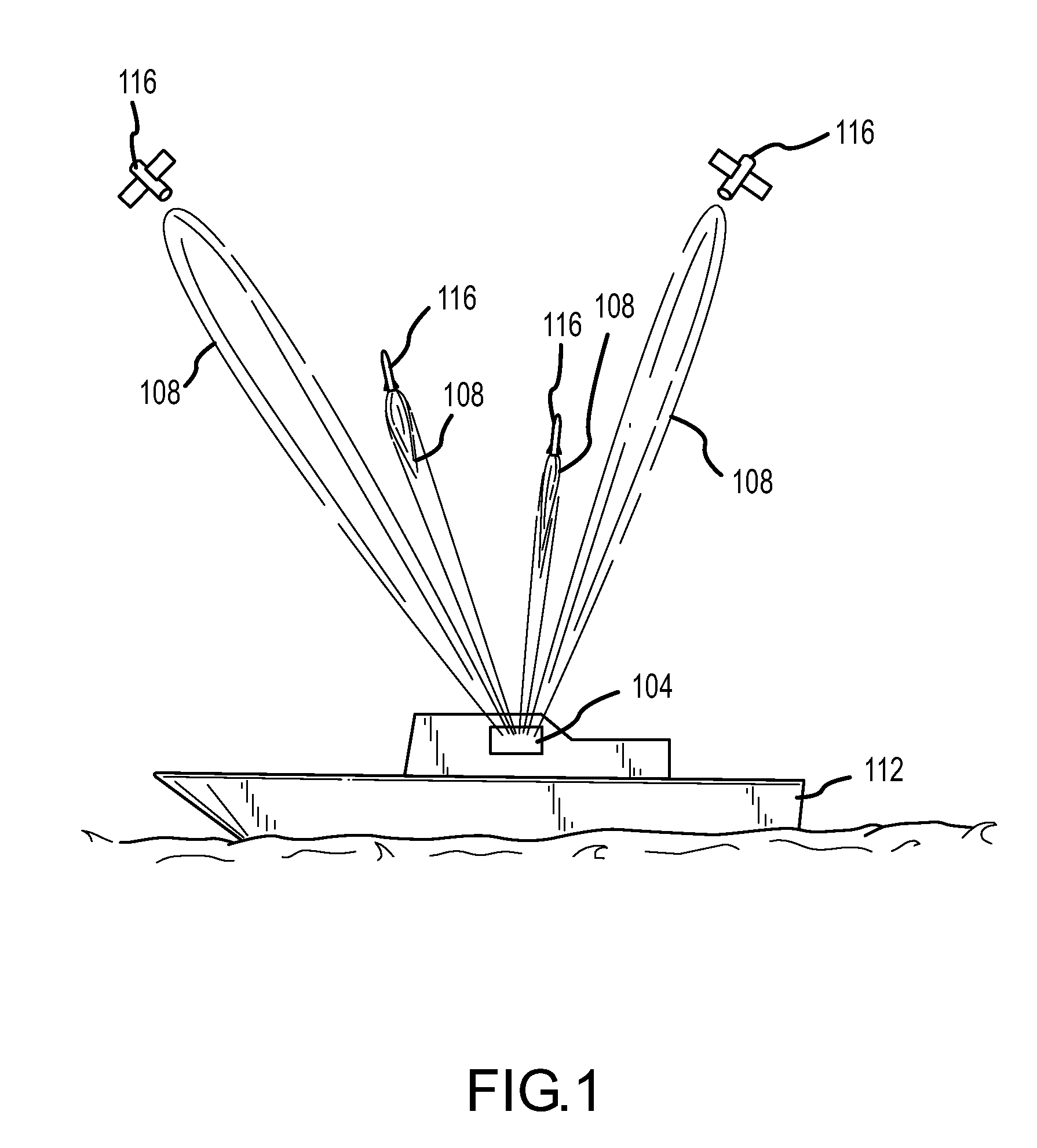Packaging technique for antenna systems
a technology of antenna system and packaging technique, applied in the direction of resonant antenna, particular array feeding system, radiating element structural form, etc., can solve the problems of difficult or impossible to achieve using conventional techniques in connection with the circuit board, the design of individual circuit board can become quite complex, and the area of the board can become quite larg
- Summary
- Abstract
- Description
- Claims
- Application Information
AI Technical Summary
Benefits of technology
Problems solved by technology
Method used
Image
Examples
Embodiment Construction
[0028]The present invention provides unit sub-arrays formed from interconnecting at least a first rigid circuit board to a flexible circuit board. More particularly, the unit sub-arrays feature antenna radiator elements that are interconnected to supporting circuitry in which the area available for creation and / or placement of the supporting circuitry is not limited to an area generally defined by the area of the radiator element or the area of the radiator elements plus at least one-half of the area between and / or surrounding the radiator elements. Furthermore, embodiments of the present invention facilitate the manufacture of phased array antennas by providing unit sub-arrays that can be manufactured as flat circuit boards using conventional techniques, including automated techniques. One application for such a modular architecture is the creation of phased array antenna assemblies.
[0029]With reference now to FIG. 1, a phased array antenna assembly104 capable of forming and / or rec...
PUM
 Login to View More
Login to View More Abstract
Description
Claims
Application Information
 Login to View More
Login to View More - R&D
- Intellectual Property
- Life Sciences
- Materials
- Tech Scout
- Unparalleled Data Quality
- Higher Quality Content
- 60% Fewer Hallucinations
Browse by: Latest US Patents, China's latest patents, Technical Efficacy Thesaurus, Application Domain, Technology Topic, Popular Technical Reports.
© 2025 PatSnap. All rights reserved.Legal|Privacy policy|Modern Slavery Act Transparency Statement|Sitemap|About US| Contact US: help@patsnap.com



